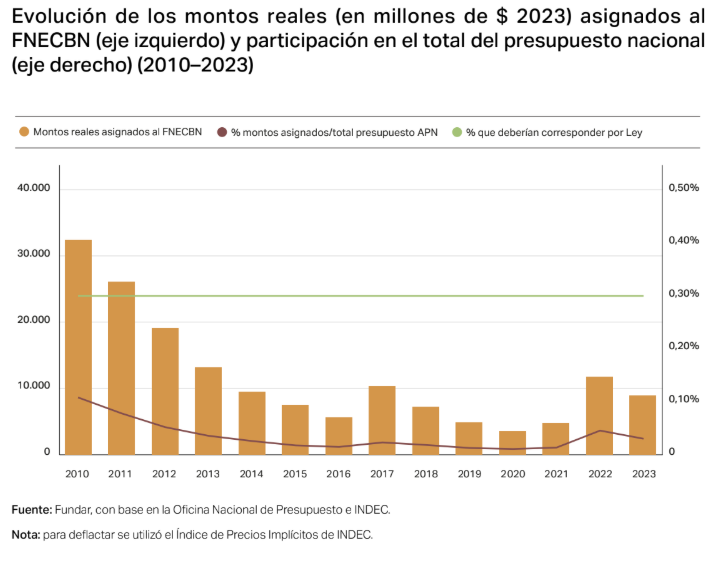Argentina’s productive structure depends heavily on the services provided by nature. Native forests regulate water, fertilise the soil and stabilise the climate. In contexts such as this, investing in natural capital is not only an environmental urgency but also an economic and social priority. The payment for ecosystem services scheme has been in place since 2007. It is a matter of improving it in order to channel private investment into forest conservation.
What are Payments for Ecosystem Services and what do they solve?
Payments for Ecosystem Services (PES) schemes are emerging as a strategic tool. They involve paying communities or individuals for carrying out conservation, sustainable management or ecosystem restoration activities. They connect ecosystem service providers with those who benefit from them. When well designed, these programmes make it possible to leverage existing institutional structures and attract private financing.
In a global context of growing interest in nature-based investments—driven by the need to manage environmental risks and meet climate and sustainability commitments—PES offer an opportunity to channel resources towards actions that generate measurable environmental and social benefits. At the same time, they promote conservation, contribute to the diversification of rural incomes and strengthen territorial roots. In this way, PES schemes act as a bridge between public conservation policies and local sustainable development strategies. They combine economic incentives with long-term objectives aimed at resilience and collective well-being.
On the path of the Law
In Argentina, Law No. 26331 on Native Forests created the National Fund for the Enrichment and Conservation of Native Forests (FNECBN). This law establishes a scheme for allocating resources and compensation to landowners with forests. In practice, this mechanism has acted as a national PES scheme. However, the fund has faced historical financing constraints. In addition, it has regulatory gaps that limit its ability to attract private investment.
Despite its relative effectiveness, like other similar programmes in the region, the scheme faces structural financing problems due to its high dependence on public resources. Since the enactment of the Forestry Act in 2007, the budget actually allocated has been systematically lower than that established by the law.
Between 2013 and 2016, for example, the FNECBN’s share of the national budget fell from 0.04% in 2013 (equivalent to 12.26% of the amount provided for in the Act) to 0.02% in 2016 (equivalent to 5.26%). In real terms, the amounts allocated to the FNECBN fell by 72% between 2010 and 2023. For 2025, the National Budget Bill allocated only 2.5% of the amount stipulated by law, equivalent to 9 billion pesos, which represents only 0.0077% of the national budget.

Based on local and international experiences, this study identifies opportunities and challenges for strengthening Argentina’s PES scheme. From there, policy guidelines are proposed to mobilise new sources of capital towards ecosystem conservation and restoration, with a focus on native forests. The ultimate goal of this proposal is to reduce the current financing gap and consolidate more sustainable environmental management models.
Public Policy Recommendations
Recommendations for attracting private capital for conservation
- Design a voluntary contribution mechanism that allows individuals and companies to finance specific conservation projects through the creation of crowdfunding platforms geared towards local sustainable management initiatives and by introducing regulatory changes that enable and regulate decentralised PES schemes.
- Promote the creation of a national regulatory framework for decentralised PES that, without replacing Law No. 26331 on Native Forests, formally enables and regulates initiatives operated by subnational governments, civil society and the private sector.& nbsp;
- Assess the technical and economic feasibility of developing and marketing carbon and biodiversity credits within the framework of the national PES scheme. The FNECBN could assume the role of coordinator and marketer of these credits, replicating experiences such as that of Costa Rica. The experience of Misiones with its ECO2 jurisdictional programme is a relevant precedent for evaluation and possible replication in other provinces.
Recommendations to strengthen Law No. 26331 on Native Forests, aimed at diversifying public financing:
- Incorporate clear mechanisms for private participation in FNECBN financing, establishing guarantees of transparent use and formal recognition of voluntary contributions.
- Recover and strengthen the model of independently and transparently managed environmental trust funds capable of attracting international cooperation and private capital.
- Create a team specialised in financing within the FNECBN to identify potential new sources of resources and develop attractive proposals for investors.
- Establish clear conditions, reinforce transparency, and promote environmental awareness and education actions to strengthen the adoption of sustainable practices and, as a result, the confidence of contributors.
- Review and reorient subsidies with negative impacts on biodiversity towards conservation and restoration programmes.
- Require effective compliance with the financing provided for in Law No. 26331 on Native Forests (0.3% of the national budget and 2% of withholdings).

